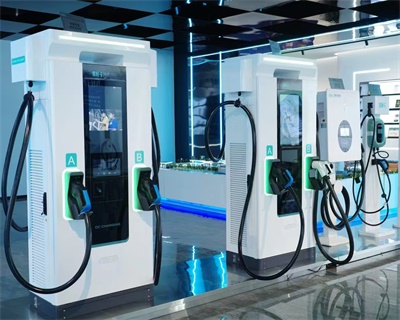How to Choose the EV Charging for Commercial Property?
If you’re considering installing an EV charging station for your commercial property, it’s crucial to choose the right equipment and infrastructure. Here are the key factors you should consider:
1. Expected Use
- Determine the number of charging stations and the charging speed required based on the specific needs of your commercial property. For example, office buildings may need to accommodate employees’ daily charging needs, while shopping centers or hotels may require more charging stations to serve customers.
2. Reservation Charging
- Providing a reservation feature can help optimize the efficiency of your charging stations and avoid long waiting times due to high demand. Allowing users to book charging times via a mobile app or website helps them better plan their charging needs.
3. Budget
- Once your budget is defined, you can select a solution that meets your requirements without exceeding your budget. Keep in mind the costs for installation, long-term maintenance, and software upgrades.
4. Location & Amenities
- When choosing the location of the charging stations, make sure they are easily accessible and do not interfere with other facility operations. Ensure that charging stations are placed in parking areas that are convenient for users.
5. Grid Infrastructure
- Ensure the location’s power supply can support the required charging capacity. In some cases, additional grid upgrades or transformers may be necessary to ensure stable power supply.
6. Incentive Programs
- Check if there are any local government incentives or rebate programs that can help reduce the initial installation costs. Many areas offer subsidies or other incentives for businesses that install EV charging stations.
What Are the Installation Requirements for Commercial EV Charging Stations?
To install a commercial EV charging station, the following requirements must be met:
1. Power Supply
- A commercial EV charging station needs an electrical system that supports the required power levels for the chargers. If the existing power supply is insufficient, you may need to upgrade the power connection.
2. Distribution Panel
- The building’s existing electrical system should accommodate multiple high-power charging cables. New distribution panels or sub-panels may need to be installed.
3. Transformer
- If the location has inadequate grid power, an onsite transformer may be needed to boost the voltage for the utilities connection.
4. Conductors
- The wiring must be appropriately sized based on amperage load and should be laid underground in conduits for protection.
5. Permits
- Commercial EV charging stations need electrical permits and inspections to verify safety and compliance with required standards.
6. Billing and Pricing
- Commercial charging stations usually need a billing system that can calculate charges based on the amount of energy used or time spent, and support various payment methods.
7. USGBC Certification
- If your building is aiming for LEED certification (green building certification), the design and installation of charging stations must meet specific standards.
What Maintenance Is Needed for EV Charging Stations?
To ensure your EV charging stations remain in optimal condition, regular maintenance is crucial. Here are three types of maintenance:
1. General Maintenance
- Regular cleaning, inspections, and replacement of worn parts are essential for keeping the equipment in good condition. Proper maintenance can reduce repair costs and prolong the life of the equipment.
2. Software Updates
- Charging station software may require regular updates to fix bugs, add features, or stay compliant with the latest regulations.
3. Electrical Testing
- Periodic testing of the electrical infrastructure is essential to ensure grounding integrity, voltage levels, resistance, and other electrical safety components are functioning properly.
To enhance maintenance efficiency, consider joining a preventive maintenance program like Blink Care, which is tailored for AC (Level 2) and DCFC (Level 3) charging equipment to improve the long-term performance and user experience.

How to Monitor the Usage and Performance of My EV Charging Station?
Monitoring the usage and performance of your commercial EV charging station is key to ensuring its efficient operation. Here are some effective monitoring methods:
1. Network Monitoring
- If the charging station has a backend system, you can easily access real-time or periodic usage data, which helps analyze usage patterns and optimize resources.
2. Metering Data
- Installing submeters on the distribution panels can help track local load management and provide usage analytics to optimize charging station operations.
3. Usage Reports
- Many network operators and software platforms generate custom reports with analytics features on a monthly or annual basis, helping you assess operational efficiency and optimize resources.
4. Equipment Sensors
- Installing sensors allows you to actively monitor the charging station components for faults or wear and tear, helping prevent disruptions in service.
By using these effective monitoring tools, you can ensure your charging station operates efficiently and perform necessary maintenance or upgrades on time.





